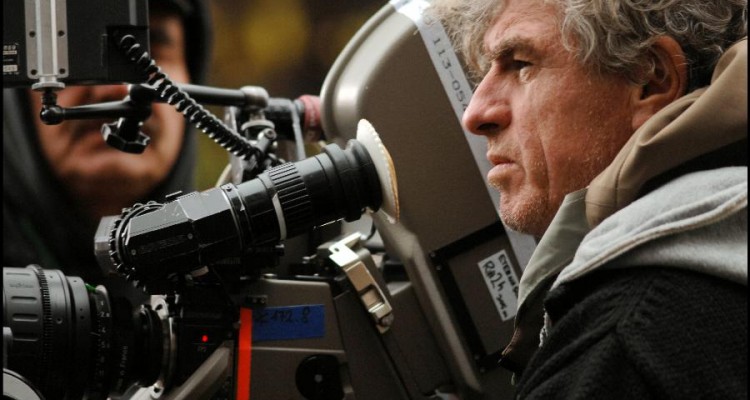A Style is Born – “Chungking Express” (1994)

The legend of how “Chungking Express” came to be is now as famous as the film itself, and stands as the greatest example of Doyle and Wong’s improvised and spontaneous modus operandi. Shot in two months, as a breather from editing his wuxia epic “Ashes of Time,” “Chungking Express” ended up being the film that put Wong on the international map, many still hailing it as his quintessential film. Would this have been the case without Chris Doyle? The film is an atomic blast of creative energy; exhilarating, vibrant, inventive – it coaxes us with its visually provocative use of neon colours smudged and smeared with perfectly imperfect and abstract focus. He may be the Keith Richards of cinematographers behind the camera, but through the lens, Doyle is cinema’s Jackson Pollock; an action painter of the most vivid kind, creating a language that spawned litters of copycats and wannabes. There’s no better moment in any film that celebrates this harder than the infamous shot from the opening chase sequence of “Chungking Express.” Lasting only a fleeting 2 seconds, Hong Kong’s neon nightlife is rendered a blur while Cop. 223 (Takeshi Kaneshiro) pursues a nameless villain right before he’s about to brush past Brigitte Lin’s femme fatale. As with most every film from this list, choosing the best shot from “Chungking Express” is practically impossible, because so many of Doyle’s shots engrave themselves on the frontal lobe – think of Faye Wong’s fixated stare at Tony Leung while the crowd speeds past in the foreground, or all those magical escalator reflections. But, as a tone-setter so early in the film, this must have been the one that knocked people out with its inventive and audacious use of light, colour and focus; creating cinematic texture and redefining the way people thought of “motion” in motion pictures. With Wai-Keung Lau.
Cagey Conversation – “Ashes of Times” (1994)

Wong’s wuxia tale can be confusing if you’re into straightforward plotlines and linear character action. Its plotline is as confusing to follow, as its visual telling is resplendent to behold. With every frame, the film seems to vie for the number one spot on Wong Kar-Wai’s best-shot films. Its aggressively saturated yellow hues at times leave the impression that Doyle’s greatest tool was not the camera, but the sun and a magnifying glass. Scorched desert landscapes pierce through the screen, reflections sumptuously melt into each other like smooth liquid puddles of spilt oil, but one standout shot screams artistic bravado with such a high pitch, it just about drowns everything else. The scene sees Brigitte Lin’s Yang and Leslie Cheung’s Feng discussing – what else? – love. The shot, lasting almost a full minute and a half, observes Lin and Feng’s movements behind a couple of bamboo birdcages (the film’s most prominent symbol) as they discuss the possibility of Yang’s brother Yin having some sick infatuation with his sister. The kick is that Yang and Yin are the same person, and the shadow-dance on the actors’ faces – created by daylight shining through the revolving cages – captures this trickery as evocatively as it symbolizes Feng and Yang’s entrapped destinies. Doyle’s hand-held movements glide behind the birdcages, creating a sense of palpable space – the entrapped atmosphere perfectly complimenting the cagey conversation while literally keeping the viewer captive like a caged bird.

